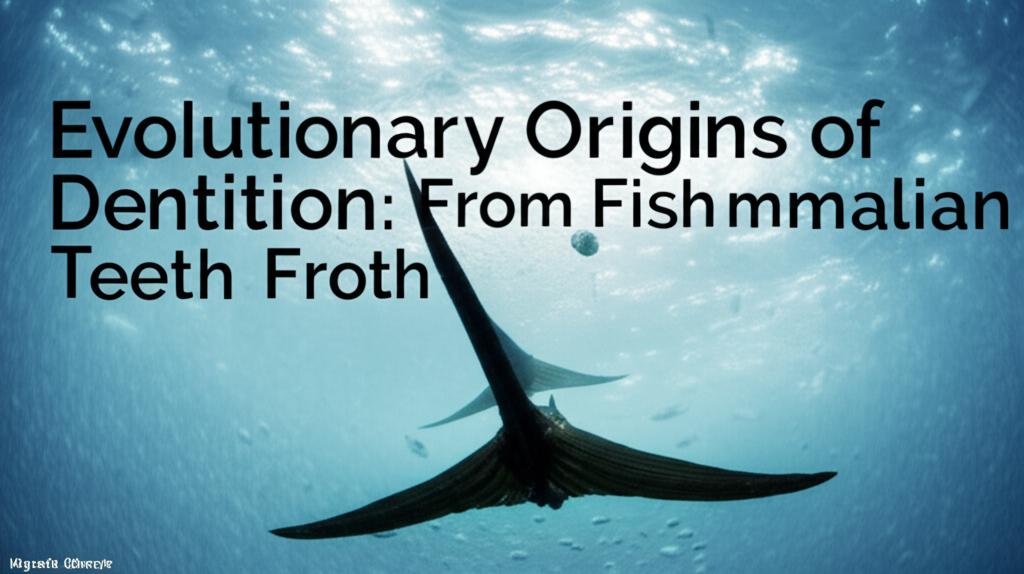The journey of teeth from their ancient beginnings as components of fish armor to the complex and varied dentitions of mammals is a fascinating story of evolutionary innovation spanning hundreds of millions of years. Recent research continues to illuminate this path, revealing the deep sensory origins of these essential structures.
From Protective Armor to Sensory Spikes:The earliest vertebrate ancestors were jawless fish, many of which were covered in a protective bony armor. Embedded within this armor were small, tooth-like structures called odontodes. For a long time, scientists believed these odontodes were primarily defensive. However, groundbreaking studies published in May 2025 have revealed a more nuanced picture. High-resolution CT scans and fossil analysis of ancient fish, some dating back over 460 million years, show that these external odontodes contained dentine – the same sensitive tissue found beneath the enamel of human teeth. This suggests that these early "skin teeth" also played a crucial sensory role, helping these ancient creatures perceive their environment, including water pressure and temperature. The "genetic toolkit" responsible for these sensory tissues on exoskeletons was later repurposed to form the sensitive teeth within our mouths. This explains why our teeth are so responsive to various stimuli.
The Dawn of Jaws and True Teeth:The evolution of jaws in early vertebrates, such as the extinct placoderms, was a pivotal moment. While the exact nature and timing of tooth evolution in placoderms is still an area of active research, it's understood that true teeth, distinct from scattered dermal odontodes, began to emerge along the jaw margins in some of these groups. There's ongoing debate about whether teeth evolved once or multiple times in early jawed vertebrates. Some studies suggest that teeth in certain placoderm groups, like arthrodires, might have evolved convergently with those of other jawed vertebrates. These early teeth were likely simple, conical structures. The "outside-in" hypothesis has long been a dominant theory, suggesting that odontodes from the external skin migrated into the oral cavity to form teeth. However, the "inside-out" hypothesis proposed that teeth first arose within the pharyngeal (throat) cavity and then moved outwards. More recent research and reanalysis of fossil evidence tend to support a more integrated view, suggesting that the capacity to form odontodes (tooth-like structures) existed both externally and internally, and the distinction between skin denticles and oral teeth became more defined over evolutionary time. Studies on early bony fish like Lophosteus indicate a close developmental relationship between teeth and dermal odontodes, suggesting they are modifications of a single developmental system.
The Rise of Diverse Dentitions:As vertebrates diversified, so did their teeth, adapting to a wide array of diets and lifestyles. In fish, teeth can be found not only on the jaws but also in the pharynx and on gill arches, showcasing remarkable adaptability. Sharks, for instance, possess dermal denticles (placoid scales) covering their skin, which are structurally homologous to their teeth and share a similar developmental origin. They also famously exhibit continuous tooth replacement, a feature common in many non-mammalian vertebrates.
Mammalian Specialization:The evolution of mammalian dentition marks a significant shift towards more complex and specialized tooth forms. Early mammals, which co-existed with dinosaurs, possessed relatively simple teeth. However, a key innovation in mammalian evolution was the development of the tribosphenic molar – a multi-cusped tooth that allowed for more efficient processing of food. This ancestral molar pattern is considered a hallmark of therian mammals (marsupials and placentals) and appeared in the Late Jurassic, around 160 million years ago.
From this foundational tribosphenic pattern, mammalian teeth have undergone extraordinary diversification, leading to the vast array of tooth shapes and arrangements we see today. This includes the development of distinct tooth types within the same jaw (heterodonty – incisors, canines, premolars, and molars), each adapted for specific functions like cutting, tearing, grinding, or crushing. The precise occlusion (how upper and lower teeth fit together) of mammalian teeth is another critical feature, allowing for efficient mastication.
Furthermore, mammalian teeth are characterized by having roots that anchor them firmly in the jaw. Unlike the continuous replacement seen in many other vertebrates, most mammals have only two sets of teeth during their lifetime (diphyodonty). The study of growth rings in the tooth sockets of some of the earliest mammals, such as Morganucodon and Kuehneotherium (around 200 million years old), has surprisingly revealed that these early insectivore-like creatures had longer lifespans than similarly sized modern mammals, more akin to reptiles, suggesting they had a slower-paced life.
The intricate development of mammalian tooth shape is governed by complex genetic signaling pathways, with structures like the "enamel knot" playing a crucial role in determining cusp patterns. Remarkably, research indicates that the fundamental genetic mechanisms for tooth development, including those involving enamel knot-like signaling centers, are conserved across vertebrates, predating the evolution of complex mammalian teeth and even having roots in the development of dermal tooth-like structures in fish.
In summary, the evolutionary journey of dentition is a testament to the power of natural selection to shape biological structures from simple protective and sensory origins into highly specialized and diverse tools for survival. From the armored skin of ancient fish to the intricate and varied teeth of modern mammals, this evolutionary saga continues to unfold as new fossil discoveries and molecular research provide ever-deeper insights into our own dental heritage.

